We all love reading, but there is a slight hint of shock when we discover that the book we wanted to read is actually the size of a brick. Many readers tend to choose books depending on their length and how much time it might take to finish them. Although many wouldn’t mind reading a book that is more than 1000 or 1500 pages, you might just think twice before starting books that fall into the category- longest books in history.
There has obviously been an ongoing debate about the books listed here, as everyone counts the length of a book in a different way. Firstly, it is easy to count the number of pages or words in a digital manuscript today, but for older books, this number can only be estimated.
Plus, for readers, the length of a book generally refers to the number of pages but while considering books for world records, it could be the number of words written or even the number of total characters, which are counted. Also, do we consider books written only in one particular language or all language of the world together or translated versions? And does one book mean one volume or do multiple volumes of a book still count as one? All these questions do make this task difficult.
Nevertheless, here is a list of the world’s top 10 longest books in terms of number of words:
1.
Marienbad My Love by Mark Leach
17.8 million words
10,710 pages
17.8 million words
10,710 pages
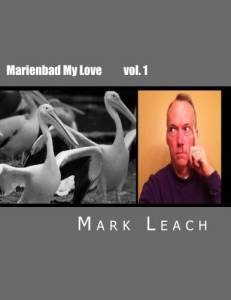
“Exiled on a deserted island, a Christ-haunted journalist-turned-filmmaker attempts to persuade a married women from his past to help him produce a science-fiction-themed pastiche to the 1960s French New Wave classic, “Last Year at Marienbad.” Through this act of artistic creation, he expects to carry out the will of God by prophesizing the death of time and the birth of a new religion. If only he can make the woman remember him… “Marienbad My Love” is the world’s longest novel, a multi-million-word, multiple-volume work meticulously assembled through calculation and chance from fragments of pre-existing texts both written and appropriated by Mark Leach over the course of 30 years – “the movie,” as Leach calls it, “of all my labours and all my inspirations.””
2.
The Blah Story by Nigel Tomm
11 million words
7312 pages
11 million words
7312 pages
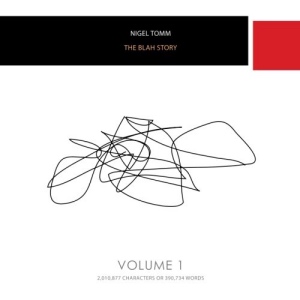
“Overwhelmingly creative, Nigel Tomm demolishes the barrier of words and meaning, giving vitality and expressive strength to the pattern of his most exclusive novel – The Blah Story. It is a new way of conceiving text that frees the imagination, allowing you to personalise each and every word by your own creativity.”
3.
Artamène by Madeleine de Scudéry
2.1 million words
13,095 pages
2.1 million words
13,095 pages

“Artamène or the Grand Cyrus is a key novel by Madeleine and Georges de Scudéry. Originally published between 1649 and 1653, the novel is known to be the longest French novel ever written (13,095 pages in the original edition and about 2,100,000 words). It took five years, from 1649 to 1653, for this river novel to appear in its entirety. In fact, although the work enjoyed considerable success at the time, it was not published after the seventeenth century because of its length.” (translated from French)
4.
Les Hommes de Bonne Volonté by Jules Romains
2.07 million words
8000 pages
2.07 million words
8000 pages

“I honestly believe that a preface is useless except when it is indispensable If I have decided to write this one to Man of Good Will, I imply that I consider it to be indispensable. It is so for this reason, in the first place : the work whose publication begins with this volume will be of very considerable dimensions. The reader will not necessarily realise that fact beforehand. If he does not realise it, he may gather an erroneous impression of this opening volume, and may apply a criterion of judgment to it which is lacking in foundation. It is obvious that you judge a building in different ways if it is intended to be self-sufficing or if, on the contrary, it constitutes only a portico. Onlookers who pass by it while it is under construction and air their opinions about the purpose and proportions of the portico will probably be very far wide of the mark if they fail to appreciate the fact that the architect has so far covered only a small part of the site. Some people may pull me up here and point out to me that thoughtful architects surround their site with a high paling as long as the building is unfinished, in order to spare their contemporaries errors of judgment which may make them blush afterwards.” (from the author-translated from French)
5.
A La Recherche du Temps Perdu by Marcel Proust
1,267,069 words
3,031 pages
1,267,069 words
3,031 pages
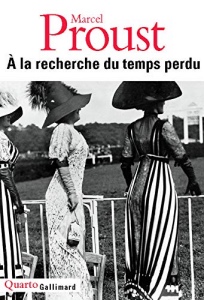
“He no longer esteemed the face of Odette according to the more or less good quality of his cheeks and the pure meatiness which he supposed to have found by touching them with his lips if he ever dared to kiss her. but like a skein of subtle and beautiful lines that his eyes unwound, continuing the curve of their winding, joining the cadence of the neck to the shedding of the hair and the bending of the eyelids, as in a portrait of her in which her The type became intelligible and clear: he was looking, a fragment of the fresco appeared in his face and in his body, which he always sought to find there, whether he was near Odette or thought only of she, although he no doubt kept to the Florentine masterpiece only because he found it in her, yet this resemblance conferred on her also a beauty, made her more precious. ignored the price of a being who would have adorable to the great Sandro, and he congratulated himself that the pleasure he had in seeing Odette found a justification in his own aesthetic culture. He thought that, by associating Odette’s thought with his dreams of happiness, he had not resigned himself to a second-rate solution as imperfect as he had thought so far, since he contented himself with the most refined art tastes. He forgot that Odette was no more for that a woman according to his desire, since precisely his desire had always been oriented in the opposite direction.” (translated from French)
6.
Mission Earth by L. Ron Hubbard
1.2 million words
3,992 pages
1.2 million words
3,992 pages
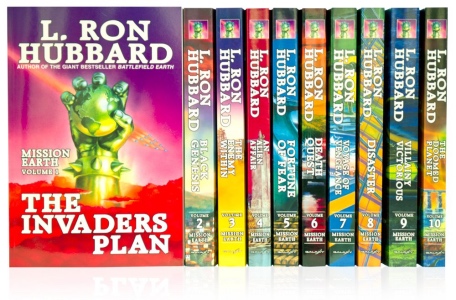
“Earth does not exist… Or so they want you to believe. Who are they? What do they want? And who do they think they are? They are the Voltarians of Voltar an empire 110 planets strong. They are already among us. And the invasion is about to begin . . . in a hundred years or so. Or is it? The truth is far more sinister. Undercover, underground and out of sight, the invaders plan what may in fact be a massive diversion. In the darkest recesses of Voltar’s Coordinated Information Apparatus (otherwise known as the CIA), a tyrant of terror sets out to exploit the invasion in order to seize power. All that stands in his way is a planet that doesn’t exist. Discover a world where corporations rule and political corruption is rife. Where governments are driven by oil and controlled by drugs. Where global warming is getting hotter by the minute…and a scorching love affair could determine the fate of millions. Where a cosmic conspiracy is about to hit home and the intergalactic intrigue knows no bounds.
They call it Blito-P3. We call it Earth. You can’t afford to look the other way. It’s the end of the world as you know it… and the beginning of one of the most spectacular, thought-provoking, and wildly inventive works of science fiction and espionage of our time.”
7.
Sironia, Texas by Madison Cooper
1.1 million words
1731 pages
1.1 million words
1731 pages
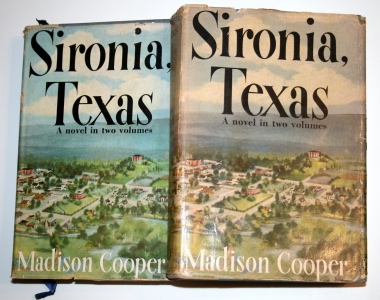
“Waco novelist Madison Cooper made news in 1952 when Time magazine declared his 1.1 million word Sironia, TX to be “the longest novel by an American.” The novel was a NY Times best seller for 11 weeks. At the time the novel was scandalous and banned in some places. It talks about small town central TX life in the early 1900s. Cooper modeled some of his characters after real local people. This book has been well loved by countless readers over the years. This is a real gem-signed by the author on volume 1″
8.
Zettels Traum by Arno Schmidt
1.1 million words
1,536 pages
1.1 million words
1,536 pages

“The novel narrates the life of the main characters, Daniel Pagenstecher, Paul Jacobi and his wife Wilma, and their teenage daughter Franziska. In discussing the life and works of Edgar Allan Poe, the four engage in the problems connected with a translation of Poe. Langbehn’s study investigates how literary language can mediate or account for the world of experiences and for concepts. Schmidt’s use of unconventional presentation formats challenges us to analyse how we think about reading and writing literary texts. Instead of viewing such texts as a representation of reality, Schmidt’s novel destabilises this unquestioned mode of representation, posing a radical challenge to what contemporary literary criticism defines as literature. No comprehensive study of Zettel’s Traum exists in English.”
9.
Min Kamp by Karl Ove Knausgård
1 million words
3,600 pages
1 million words
3,600 pages
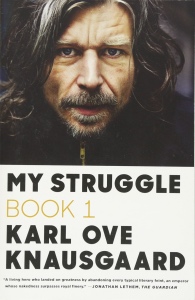
“A New York Times bestseller, My Struggle: Book 1 introduces American readers to the audacious, addictive, and profoundly surprising international literary sensation that is the provocative and brilliant six-volume autobiographical novel by Karl Ove Knausgaard. It has already been anointed a Proustian masterpiece and is the rare work of dazzling literary originality that is intensely, irresistibly readable. Unafraid of the big issues―death, love, art, fear―and yet committed to the intimate details of life as it is lived, My Struggle is an essential work of contemporary literature.”
10.
Clarissa by Samuel Richardson
984,870 words
1,534 pages
984,870 words
1,534 pages
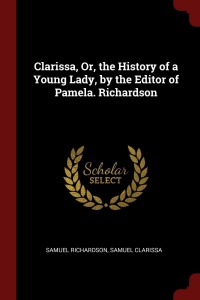
“This work has been selected by scholars as being culturally important, and is part of the knowledge base of civilisation as we know it. This work was reproduced from the original artefact, and remains as true to the original work as possible. Therefore, you will see the original copyright references, library stamps (as most of these works have been housed in our most important libraries around the world), and other notations in the work. This work is in the public domain in the United States of America, and possibly other nations. Within the United States, you may freely copy and distribute this work, as no entity (individual or corporate) has a copyright on the body of the work. As a reproduction of a historical artefact, this work may contain missing or blurred pages, poor pictures, errant marks, etc. Scholars believe, and we concur, that this work is important enough to be preserved, reproduced, and made generally available to the public. We appreciate your support of the preservation process, and thank you for being an important part of keeping this knowledge alive and relevant.”
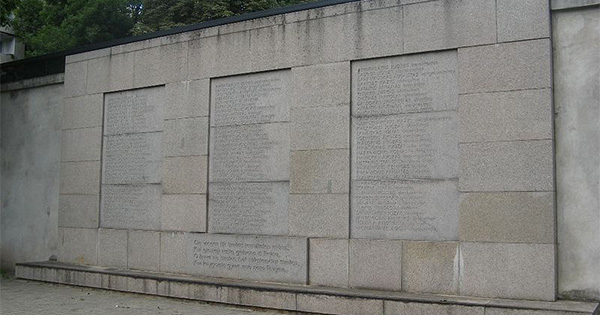
Jurgis Bielinis and the Day of the Book Smugglers
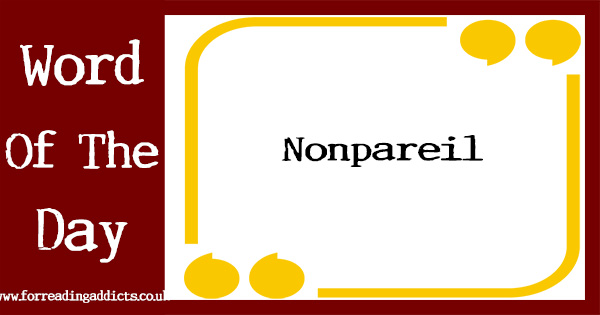
Word of the Day – Nonpareil




